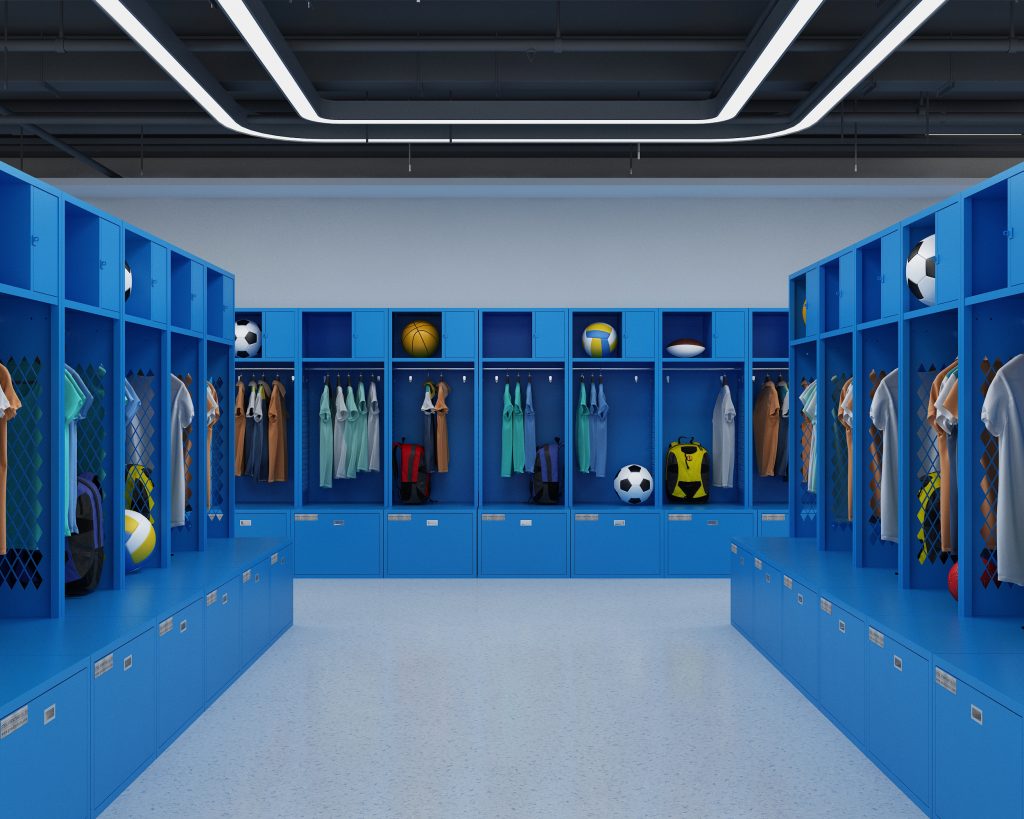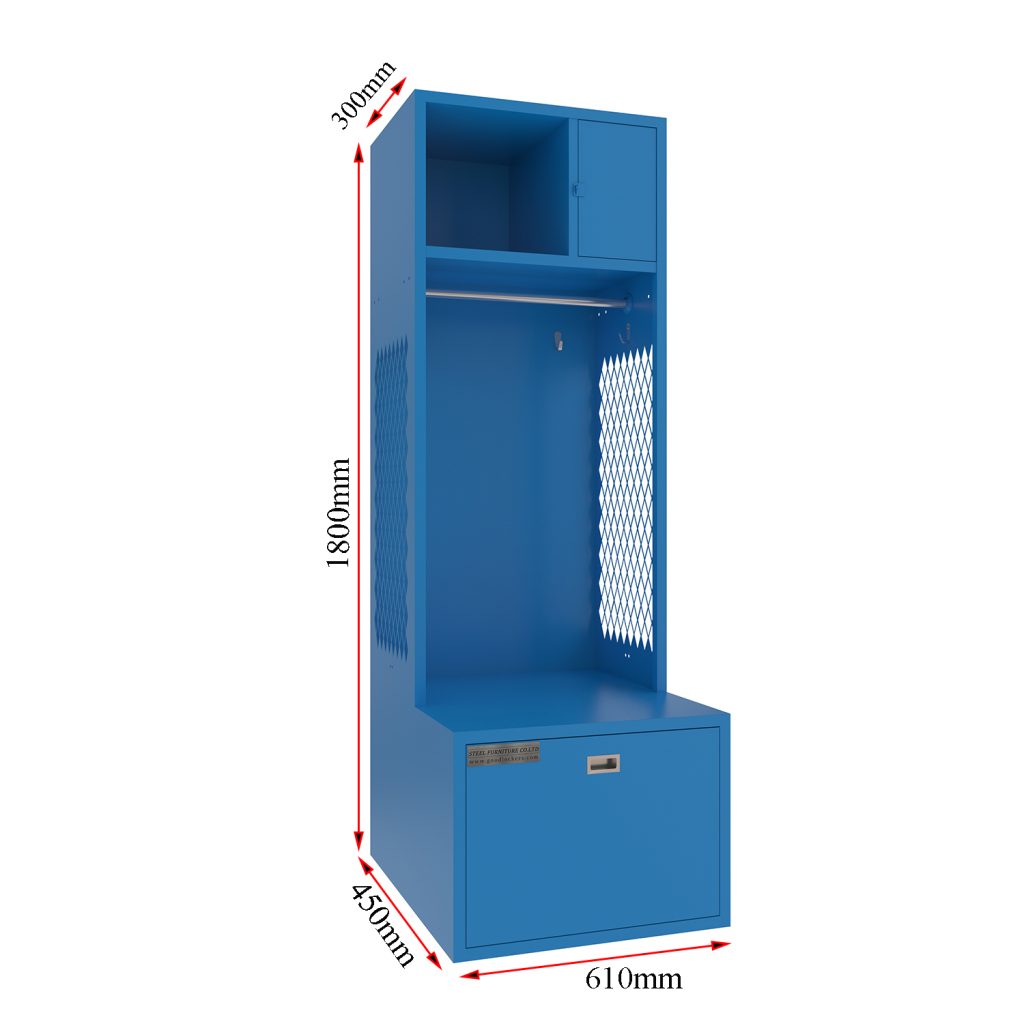The Evolution of Sports Lockers: From Functionality to Style

Sports lockers have come a long way since their inception. Originally designed for functionality and practicality, these metal storage units have evolved into stylish and personalized spaces for athletes to store their gear. From locker room organization to school pride, sports lockers have become an integral part of the sporting experience. In this article, we will explore the history of sports lockers, their various uses, and how they have transformed from a simple storage solution to a statement of individuality.
1. The Origins of Sports Lockers
Sports lockers have been a staple in locker rooms for decades, providing athletes with a secure and organized storage space for their equipment. Lockers date back to the 19th century when they first appeared in schools and workplaces.However, it wasn't until the rise of organized sports in the early 20th century that sports lockers became a necessity.
Originally, sports lockers were simple metal cabinets with a lockable door. They were designed with functionality rather than aesthetic appeal in mind, with durability and practicality being their top priorities. These early lockers were typically made of steel and featured a single compartment for storing gear and personal belongings.
2. The Evolution of Locker Room Organization
2.1 Customization and Personalization
As sports became more popular and athletes spent more time in locker rooms, the need for personalization and customization arose. Athleticians wanted their lockers to reflect their individual personalities and interests.This led to the introduction of locker decorations, including photos, posters, and personalized nameplates.
Locker customization not only allowed athletes to express themselves but also fostered a sense of belonging and camaraderie within the team. It created a unique space for each player, where they could showcase their achievements and build a sense of pride.
2.2 School Pride and Team Spirit
Lockers also became a canvas for school pride and team spirit. Athletes started decorating their lockers with team colors, logos, and slogans, creating a unified and spirited locker room environment. This sense of unity and pride extended beyond the locker room, influencing the overall team dynamics and performance.
Schools and teams also recognized the importance of locker room aesthetics in creating a positive and inspiring atmosphere. Investors began purchasing quality lockers that not only served their functional purposes, but also added to the aesthetic appeal of their locker room.
3. Modern Sports Lockers: Combining Functionality and Style
3.1 Materials and Construction
Due to recent advances in material science and manufacturing techniques, sports lockers have undergone dramatic transformation in terms of both durability and aesthetics. While metal lockers are still widely used due to their strength and security, other materials such as wood, plastic, and laminate have gained popularity for their versatility and design options.
Modern sports lockers are designed to withstand the rigors of daily use, with reinforced hinges, ventilation systems, and secure locking mechanisms. They come in various sizes and configurations to meet various sports equipment and sports performance requirements.
3.2 Locker Room Design
Locker room design has become a key consideration in sports facilities. Architects and designers now focus on creating functional and visually appealing locker room spaces that enhance the overall experience for athletes. This includes thoughtful placement of lockers, adequate space for equipment storage, and well-designed seating areas.
Locker room design also takes into account the flow of athletes, providing easy access to showers, restrooms, and common areas. Lighting, ventilation, and acoustics must all come together seamlessly in order to create a relaxing and inviting space.
4. Choosing the Right Sports Locker

4.1 Considerations for Different Sports
When choosing a sports locker, it is essential to consider the specific requirements of the sport. Different sports have different equipment needs, and lockers should be designed accordingly. For example, lockers for football players may require additional space for helmets and shoulder pads, while lockers for swimmers may need proper ventilation to dry out wet gear.
4.2 Maintenance and Durability
Lighting, ventilation, and acoustics must all come together seamlessly in order to create a relaxing and inviting space. Lockers should be made from materials that can withstand the demands of the sport and can be easily cleaned and maintained.
Additionally, lockers should be designed to prevent damage to equipment. Adequate padding, ventilation, and secure compartments can help protect expensive gear and prolong its lifespan.
5. The Future of Sports Lockers
5.1 Technological Advancements
As technology continues to advance, sports lockers are likely to incorporate smart features. These may include biometric access control, digital displays for personalized messages, and integrated charging stations for electronic devices. These advancements will enhance locker functionality and provide athletes with even more convenience and customization options.
5.2 Innovative Designs
Innovative designs in sports lockers will continue to push the boundaries of aesthetics and functionality. Designers will explore new materials, finishes, and configurations to create lockers that are both visually striking and highly practical. Customization options will expand, allowing athletes to personalize their lockers in ways never seen before.
6. Conclusion
From their humble origins as simple metal storage units to their current status as personalized spaces for athletes, sports lockers have undergone a remarkable transformation. They have become an integral part of the sporting experience, providing organization, personalization, and a sense of pride. As technology and design continue to evolve, the future of sports lockers holds even more exciting possibilities. Whether in schools, professional sports facilities, or recreational centers, sports lockers will continue to play a crucial role in enhancing the athletic journey for athletes of all levels.

